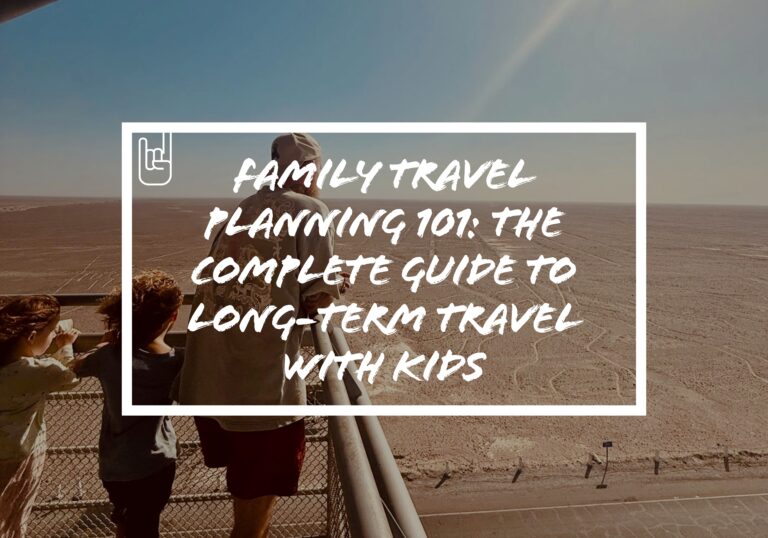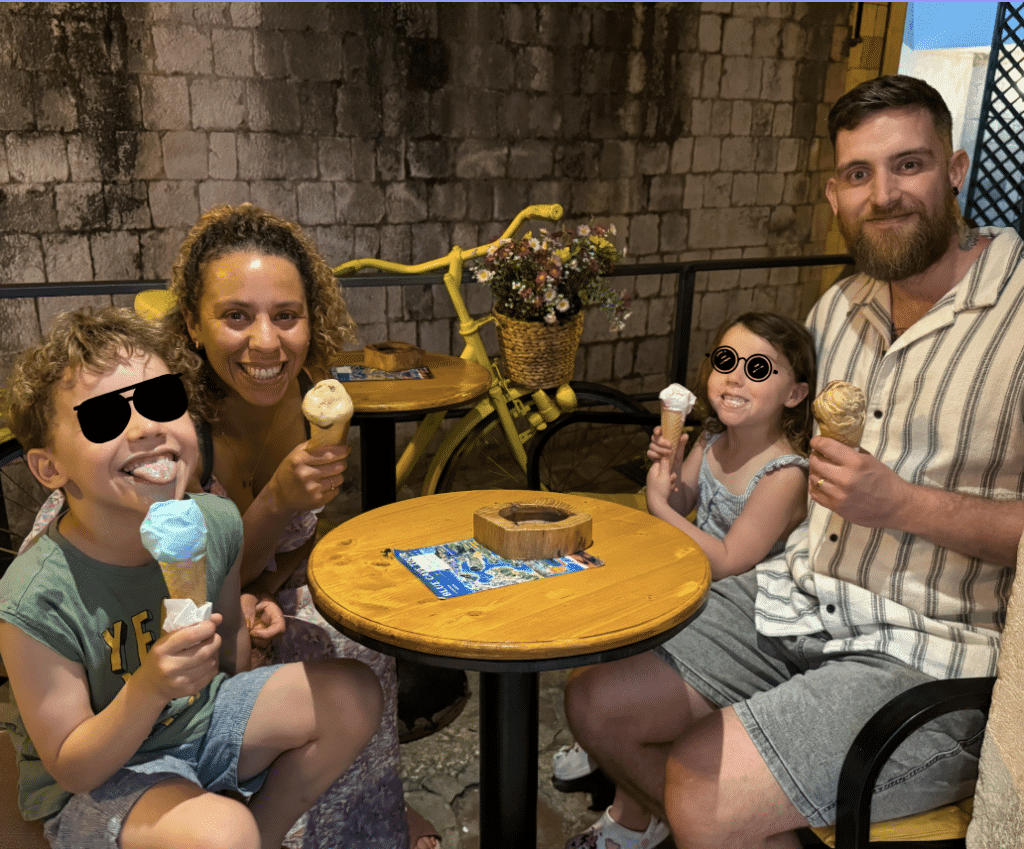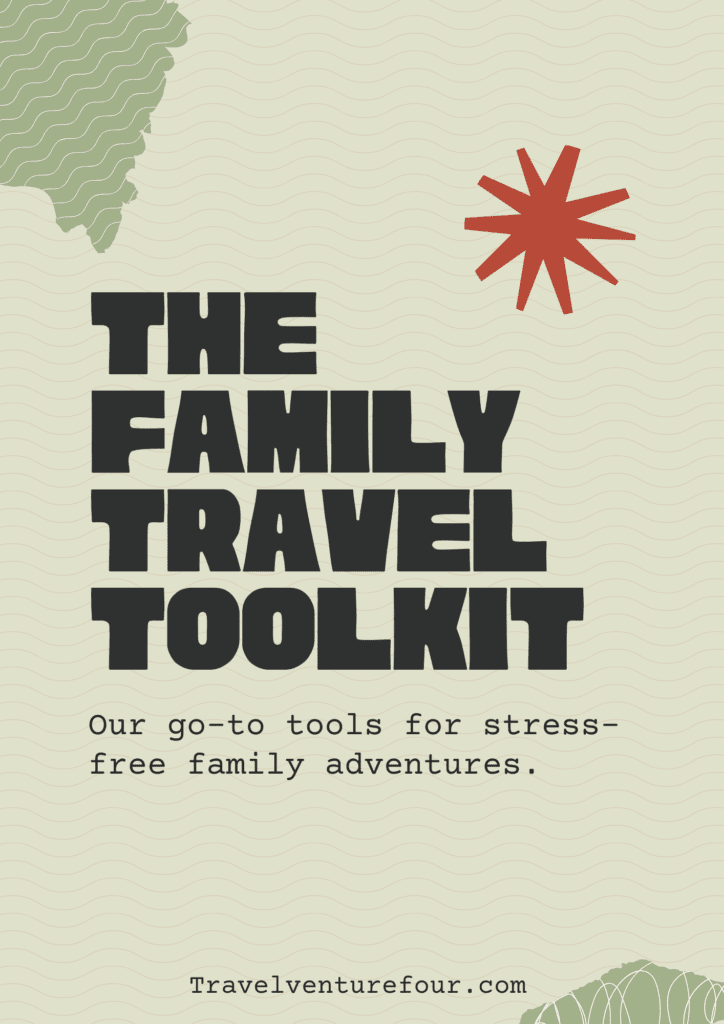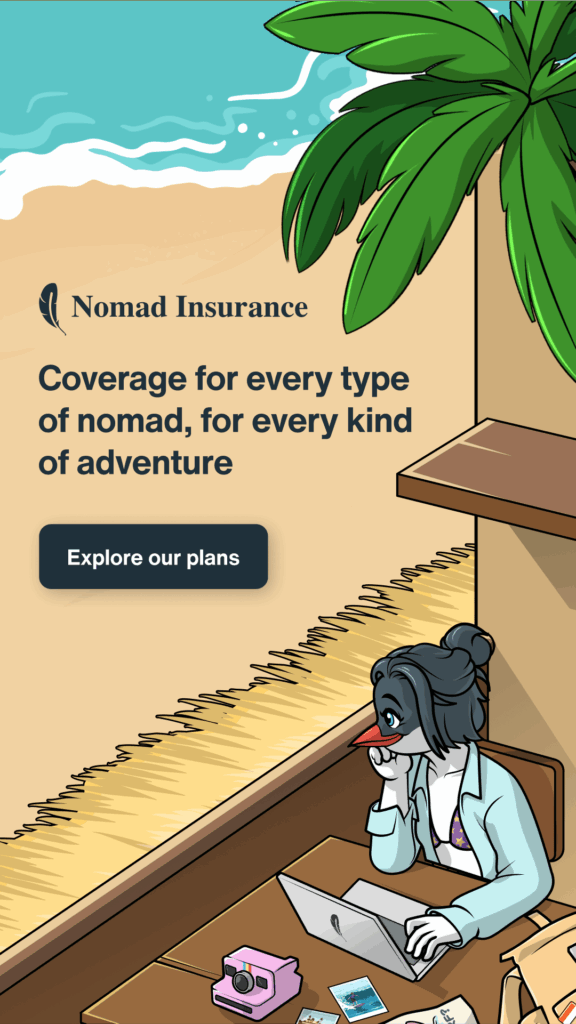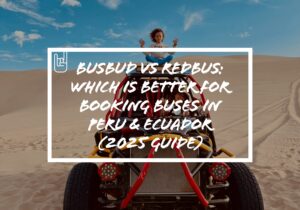Family Travel Planning 101: The Complete Guide to Long-Term Travel With Kids
Some families plan a two-week holiday. We planned a one-way ticket in August 2025. What started as a dream to show our kids the world became a crash course in budgeting, schooling, and learning to slow down. After months of planning (and plenty of mistakes), here’s everything we wish we’d known before taking our family travelling across South and Central America, the practical steps, the emotional prep, and the small wins that make long-term travel actually work.
There’s a moment every family hits when the idea of “let’s travel long-term” shifts from daydream to decision and that’s when the overwhelm hits. Where do we even start? Flights? Budget? School? Insurance? All of it at once, swirling around in one big “what if.”
We remember sitting at the kitchen table with a half-written list titled “Things To Sort Before We Leave.” Flights, vaccines, backpacks, a cat-sitter, it looked impossible. But bit by bit, the impossible turned into a plan.
That’s what this guide is: the step-by-step process we wish someone had handed us before our own year abroad. It covers everything, from budgeting to schooling, packing to patience, the messy, practical, real side of planning long-term travel with kids.
If you’ve ever wondered whether it’s actually doable, it is. You just need a framework, not a fantasy. And by the end of this guide, you’ll have one.
(If you want the “why” behind it all, start here: Why We Took Our Kids Out of School to Travel the World – it’s where this whole thing began.)
Step 1: Define Your Why + Travel Style

Before you book anything, before the lists and the spreadsheets and the late-night “are we really doing this?” conversations, you need to know why you’re going.
That single question shapes everything else. Your route, your pace, even your packing list.
For us, the “why” wasn’t about running away from routine, it was about running toward time. More time together. More learning that didn’t come from screens or homework sheets. More space to breathe and notice things.
Maybe your why looks different:
A break before the kids start secondary school.
A gap year you never took in your twenties.
The realisation that “someday” kept moving further away.
Write it down. Seriously. When the planning feels heavy (and it will), this is what steadies you.
Then comes your travel style, the rhythm that fits your family.
Are you slow travellers who like to unpack for a month and know the local bakery by name?
Or do you thrive on movement, a few days here, a new border there?
Do you crave cities and culture or wide open places with no Wi-Fi and endless sky?
There’s no right answer, just the version that works for your people. Knowing it early keeps you from planning someone else’s dream.
(For more on how travel shapes kids beyond the classroom, read Why Travel Is Good for Kids – it ties right into this first step.)
Step 2: Set a Realistic Budget

Money talk, the part everyone secretly dreads but can’t avoid. The truth is, long-term family travel isn’t one-size-fits-all. It can cost less than a year at home or double it, depending on how you travel, where you go, and how often you move.
The key is knowing your burn rate, how much your family spends per day or month on the road. Accommodation, food, transport, insurance, schooling, little extras (ice cream counts). Once you know that number, you can make actual choices instead of guesses.
We spent 1 month and based in Baños but then on the flip side travelled from Cuenca to Arequipa by land (2500km in 3 weeks only stayignin places for 3 days max.
Start with these buckets:
Accommodation: Apartments, guesthouses, homestays, whatever fits your comfort zone.
Transport: Flights, buses, trains, fuel, rental cars.
Food: Cooking vs eating out (and snacks, always snacks).
Insurance + Health: Don’t skip this, plans like SafetyWing or HeyMondo make it manageable month to month.
Activities + Learning: Museums, local tours, park entries, classes.
Savings Buffer: At least one month of expenses for surprises, they happen.
Costs swing wildly by region. A month in Peru can cost what a week in Western Europe does. That’s why we built our routes around cost-of-living research, slow travel through South and Central America gave us more time without burning through funds.
A quick rule we learned early: it’s easier to stretch money by staying longer in one spot than by cutting everything fun. Slow travel wins again.
Step 3: Map Out Your Route (Without Over-Scheduling)
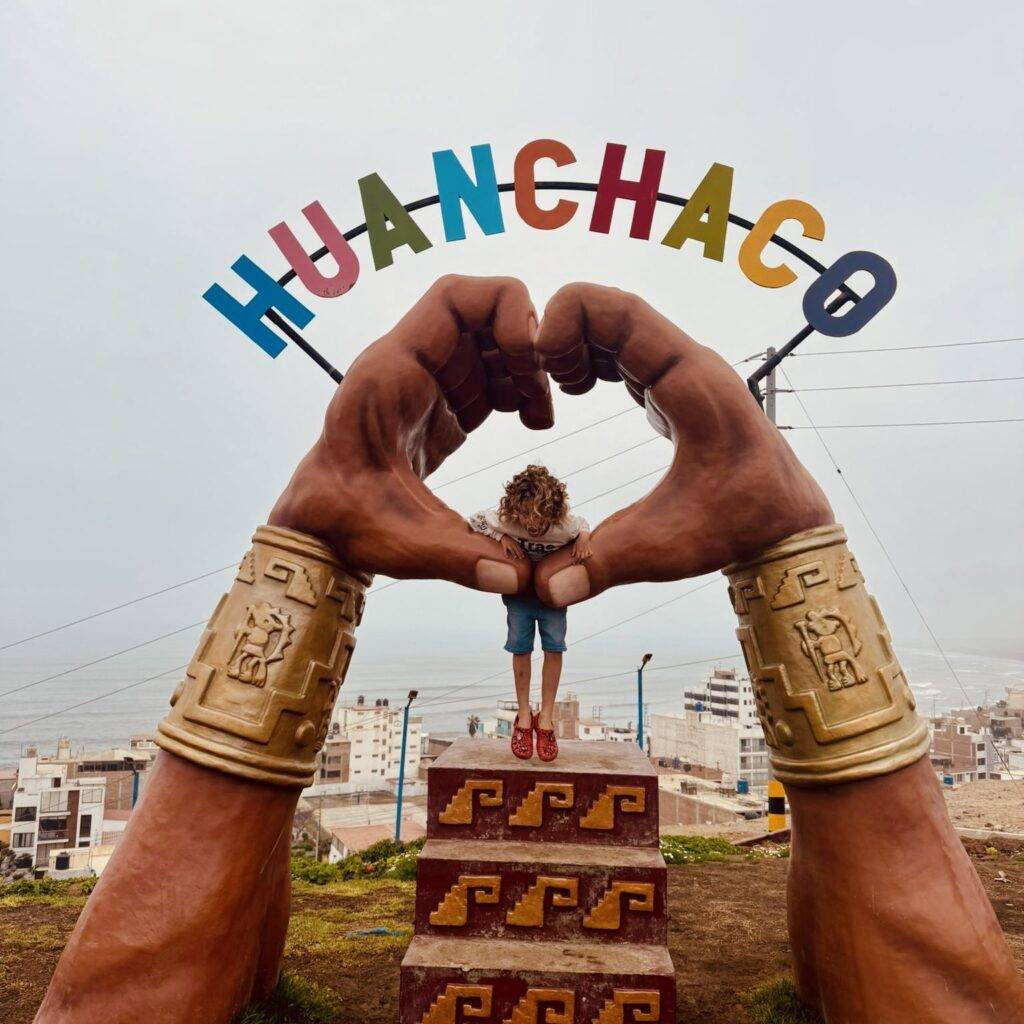
This is the fun part, until it isn’t. Because once you open Google Maps, suddenly the world feels too big. Every dotted line looks possible. Until you remember there are four of you, multiple bags, and a very real budget.
Here’s the trick: start broad, then narrow.
Think in continents first, then seasons, then specific countries.
Ask:
What weather do we actually want?
How long can we stay in each place visa-wise?
Where does our budget stretch further?
Once that’s set, draw a rough flow, not a timetable. We built ours around climate and cost—South America → Central America and gave ourselves permission to change direction when something didn’t fit.
The biggest trap for new travel families is over-scheduling. Every extra border crossing, every internal flight, adds cost and fatigue. Slow down. The journey feels better when you’re not sprinting through it.
A few tools we swear by:
Google My Maps – to visualise the route and mark ideas.
Rome2Rio – to see how long (and how costly) travel days actually are.
Notion or Trello – for shared planning, budgets, and to-dos that everyone can see.
The goal isn’t to create a perfect itinerary, it’s to design a flexible path that bends with your family’s pace. Think of it as a framework, not a contract.
You will also have unrealistic expectations, we had plenty, we thought we would learn Spanish so fast, we thought we could easily juggle work, travel and homeschooling. Also expect the country you’re travellign around to be much bigger than you think it is.
Step 4: Health, Safety & Travel Insurance
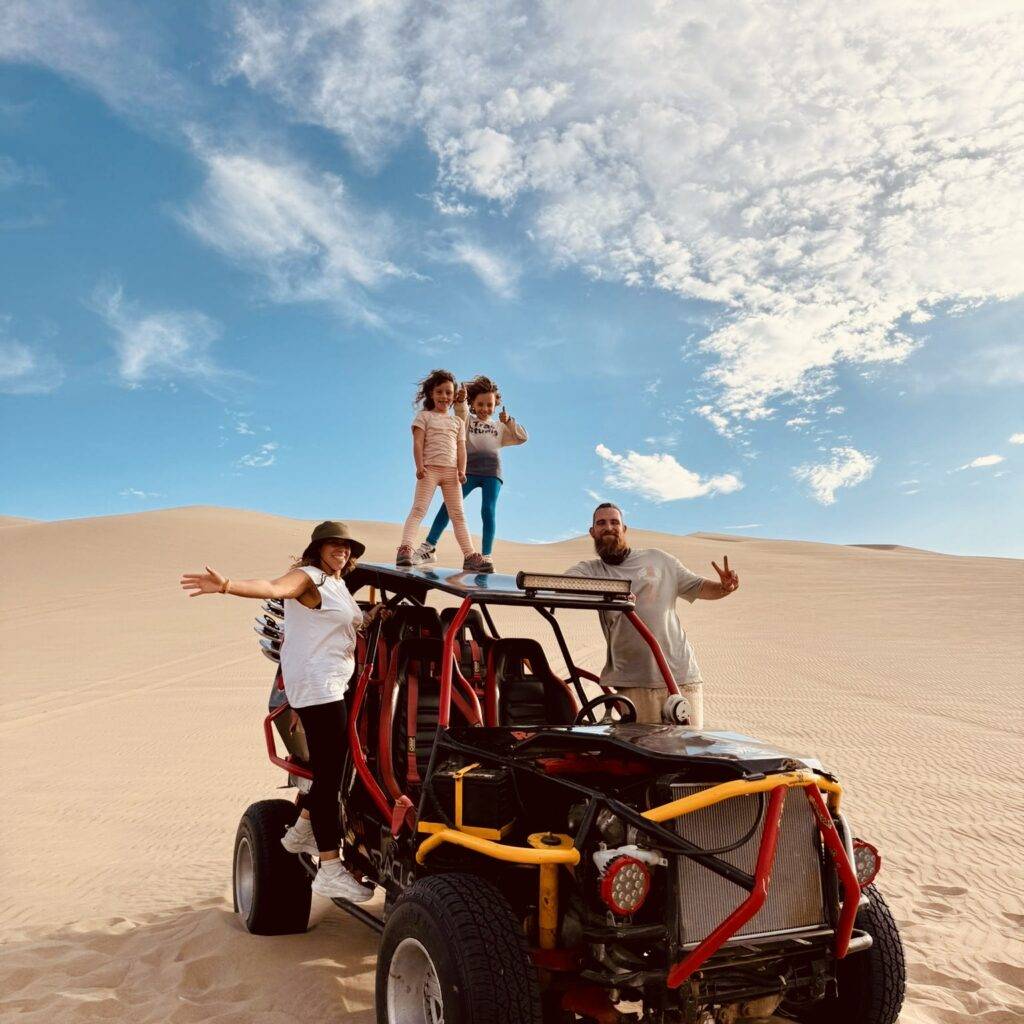
Health prep is one of those jobs you want handled before the plane takes off. It’s not exciting, no one daydreams about travel insurance fine print, but it’s the thing that keeps the trip from unravelling when someone spikes a fever halfway through nowhere.
Start with the basics:
Vaccinations: Check official travel advisories or the WHO site. Some countries (like parts of South America or Southeast Asia) may ask for proof of yellow fever shots. (Ecuador does)
Travel Health Kit: Ours always includes children’s pain relief, rehydration sachets, plasters, bug spray, motion sickness tablets, and prescriptions in their original boxes.
Everyday care: Sunscreen, hand sanitiser, and small first-aid bits, things that sound obvious until you’re three hours into a bus ride and can’t find them.
Then, insurance. We learned early that not all travel policies fit families. You want one that:
Covers long-term travel (not just two-week holidays).
Includes kids automatically or at a reduced cost.
Works across multiple countries with flexible dates.
We’ve personally used SafetyWing, which works on a monthly subscription or one off payment, perfect for slow travel or if you’re not sure how long you’ll be gone.
👉 The main thing? Don’t skip it. Hospital bills abroad can snowball fast, and even simple things like a twisted ankle or food poisoning can throw off your plans.
If you want a side-by-side breakdown of family-friendly policies, you can read our full comparison here → Family Travel Insurance 2025 Guide.
Step 5: Schooling + Education on the Road

This is the question everyoneasks first “But what about school?”
It’s the part that scares people off before they even open the map. We get it. We wrestled with the same question for months before deciding that education doesn’t stop when you leave a classroom. It just changes shape.
There are a few main routes families take:
Homeschooling: You bring the curriculum with you, structured lessons, online programs, maybe even a tutor over Zoom.
Worldschooling: Learning from the places you visit, history at the ruins, science in the jungle, maths at the market.
Unschooling: Following your child’s interests and building learning around what excites them.
Online Schooling: Enrolling in a virtual classroom to stay aligned with your home country’s system.
We’ve dabbled in all of them, mixing bits that fit our rhythm. Mornings with reading or maths, afternoons exploring. Some days are heavy on lessons; others are pure experience. The balance shifts with the country, the weather, or the mood.
If your kids will eventually return to school, keep a loose learning log, books read, projects, museums, conversations. It’s more useful than worksheets. And remember: most teachers back home respect travel learning once they see the depth of it.
What matters isn’t ticking boxes; it’s keeping curiosity alive. Kids who’ve watched penguins waddle across an empty beach or bargained in a second language don’t need convincing that the world’s worth studying.
Step 6: Packing + Gear That Actually Works

Packing for a family isn’t Tetris; it’s triage. Cut the “just in case,” keep the “used twice a week,” and build from there.
Our simple framework
One backpack/suitcase each. Kids carry light daypacks (snacks, hoodie, book).
Backpack organisation One big pack for bulk f the clothes, other big backpack for everyday and random items and then the two smaller packs, one for tech and the other for toys, hats, sunglasses and day needs.
Laundry rhythm. Plan a wash every 4–5 days. A small sink kit (plug + travel soap) saves the odd emergency. Or if based in Airbnb with washing machine every 2 days.
Essentials (we actually use)
Layers: 2–3 tees, 2 bottoms, 1 warm layer, 1 rain shell per person. Swap by climate.
Shoes: Rule of 3 — trainers, sandals/flip-flops, one “nicer” pair (or rain boots if season demands).
Sleep kit: eye mask, earplugs for adults, small comfort item for kids (morale > space).
Health pouch: kids’ pain relief, rehydration salts, motion tabs, plasters, antiseptic, prescriptions.
Tech: shared power bank, universal adaptor, offline shows/audiobooks, lightweight e-reader.
Sun/bug: sunscreen, hats, repellent (DEET or picaridin), after-bite.
Nice-to-have (keep it lean)
Tiny travel kettle or immersion coil (early-morning oats/tea saves money and moods).
Fold-flat tote for groceries/beach days.
Compact clothesline + pegs.
Climate tweaks
Tropics: quick-dry tees/shorts, rash vests, microfiber towels.
High altitude: base layers, beanies, gloves, lip balm, thicker socks.
Shoulder seasons: light puffer that crushes into a cube; it’s magic.
Kids grow. Plan for it.
Choose neutral layers that mix/match.
Pack one size-up item each (leggings/shorts) and buy local replacements as needed.
Shoes: leave room in the toe; you’ll thank yourself in month three.
Pro tip: We pack for 7–10 days and travel for months. The washing machine is your extra suitcase. (Airbnb neccasity)
For deeper nuts-and-bolts, see our guides: Family Packing List
Step 7: Accommodation, Transport & Booking Strategy
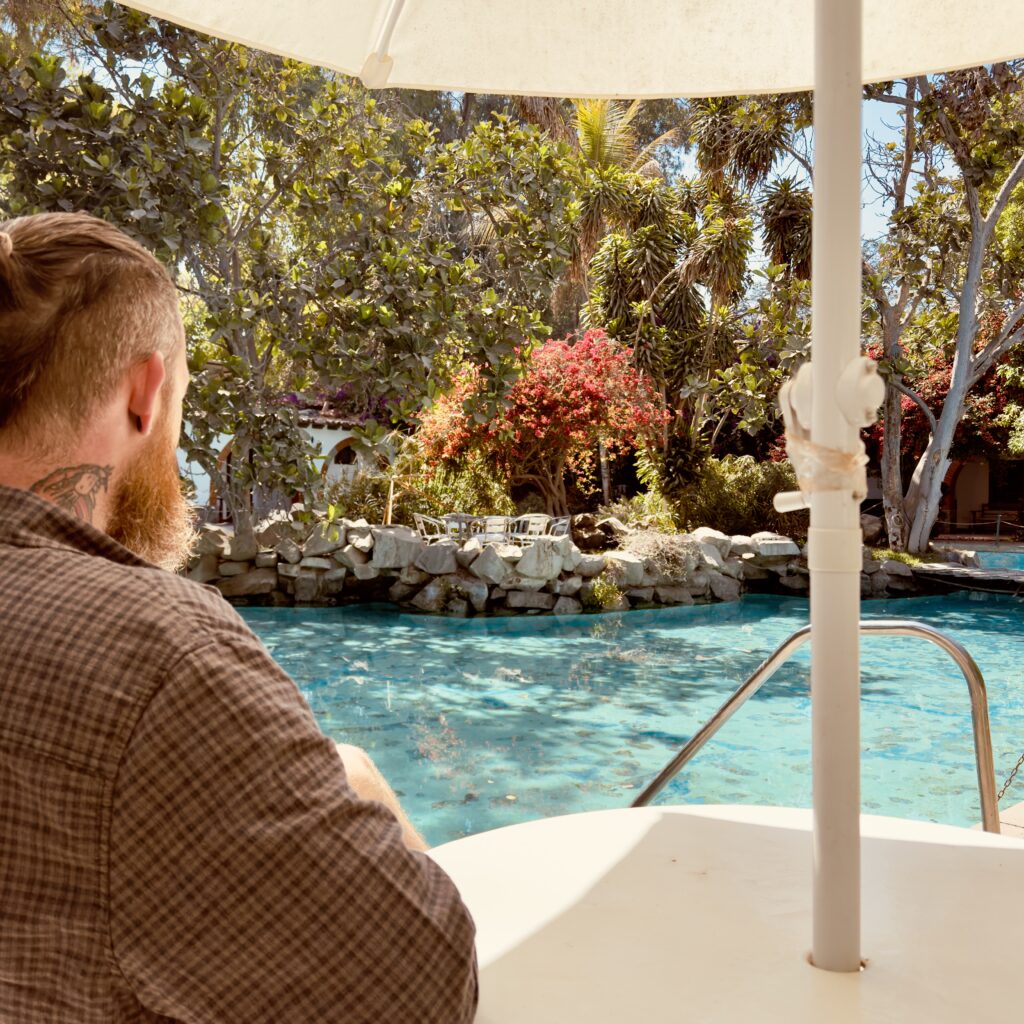
This is where the real puzzle begins, finding places to sleep, ways to move, and prices that don’t make you wince. The internet makes it easier, but the choices can be endless. Here’s how we simplified it after a few too many tabs and a handful of “never again” stays.
Finding Family-Friendly Stays
We start with Booking.com and Airbnb, always filtering for entire places, preferably 3 bedroom, kitchens, and washing machine. Obviously this is not always the case, we have stayed in hotels, hostal, half-built homestay, tents.
Then we check reviews, not just the stars, but the words. We look for “quiet at night,” “safe area,” and “good for kids.” A few solid mentions usually mean it’s true.
For longer stays (a week or more), monthly discounts often make Airbnb the cheaper option. For shorter city stops, Booking wins, free cancellation gives you wiggle room.
If you’re up for slower travel, TrustedHousesitters is an option though less ideal for families and you have to pay, altetnatively there is Workaway but we did not have a best first experience and found even if they say can host families, most in reality can’t and its more aimed at solo travllers or couples.
Transport Tips
In South America, buses are the veins of the continent, cheaper, slower, and surprisingly comfortable if you pick the right class (see our Bus Travel With Kids Guide).
For longer jumps, we compare Skyscanner, Google Flights, and Hopper side by side, Hopper’s alerts save us real money. Though as our only inline flight will be from Lima to Panama City.
Local flights can be bargains if you book in-country, but beware of baggage rules that reset by airline.
Short-distance travel?
Busbud is our sanity saver. It maps out every possible route, plane, bus, train, ferry, donkey (occasionally).
Booking Strategy
Compare at least two platforms before paying, prices vary by device, browser, and location.
Book stays early in small towns or peak seasons. Elsewhere, spontaneity saves.
Double-check check-in rules, family travel runs on naps and snacks, not midnight keys.
Ask for extras up front: high chairs, extra fans, ground-floor rooms, most hosts say yes if you ask early.
We learned the sweet spot is planning two steps ahead, not ten. Just enough structure to stay calm, enough freedom to wander.
Step 8: Managing Logistics (Visas, Money, Communication)

The not-so-glamorous side of travel, paperwork, passwords, and payment apps, but get this part right, and the rest flows smoother.
Visas & Entry Rules
Start with a spreadsheet or a simple Google Sheet. One column for each country, with:
Visa type (tourist, e-visa, visa on arrival).
Duration (e.g. 30, 60, 90 days).
Renewal or border-run options.
Requirements (proof of onward travel, vaccination, passport validity).
Most families underestimate how fast those 90-day stamps disappear, especially in South America. Keep an eye on entry dates, overstaying can mean fines or denied re-entry.
Some borders are friendly, others slow. We’ve learned to always bring printouts (not just screenshots): passport copies, booking confirmations, and bus tickets out of the country. Half the time, that’s what keeps the line moving.
Managing Money Abroad
You’ll want at least two layers:
Debit card with no foreign transaction fees (like Wise, Revolut, or Monzo). Do NOT use Halifax, they kept blocking our cards or where we needed to ring them up.
- Use MONZO – Yes Monzo has been great for us, we have personal and business account
Backup card kept separate, lost wallets happen.
- Credit Cards – Yes bring them one each, best for money protection and backp money.
Apps like Revolut or Wise let you move money between currencies and track spending in real time. We also keep a low-tech cash stash (USD or local currency) for small-town taxis or markets.
Budget tip: Withdraw larger amounts at once, fees add up fast. Hide the extra in a zip bag taped under a suitcase flap. (Yes, it’s worked for us.)
Staying Connected
eSIMs (like Airalo or Nomad) make life easier, no more SIM-card hunting after every border.
WhatsApp runs everything in Latin America, from taxis to apartment bookings. Our hack to not needing to still pay for UK number.
Download offline maps (Google Maps or Maps.me) before travel days.
If you’re working remotely, have one “anchor day” per week in a café or co-working space with solid Wi-Fi. Everyone resets, downloads, updates, and emails, Kids get to play on Minecraft… sanity restored.
Step 9: Preparing Emotionally (and Mentally)
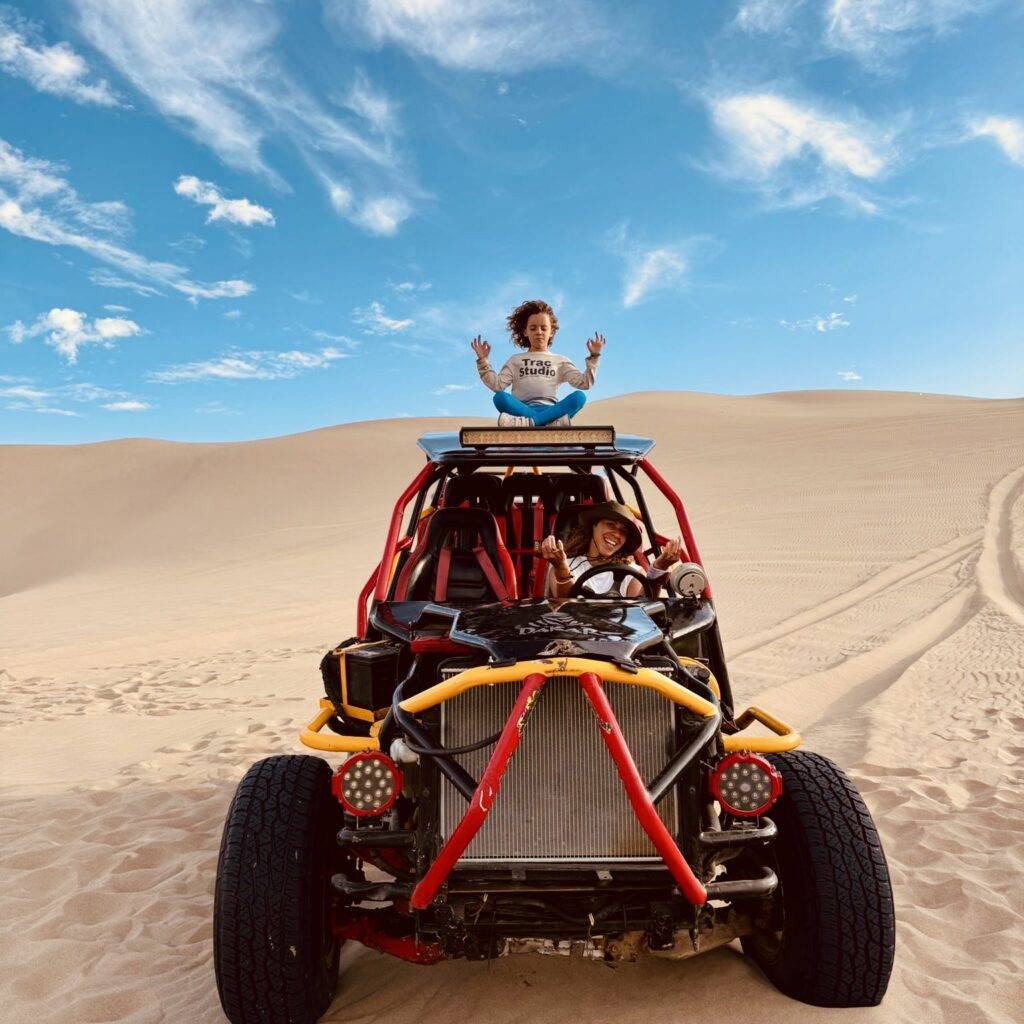
You can have the perfect spreadsheet, every visa sorted, and still feel completely unready. That’s normal. Leaving your routine behind, school, friends, work rhythms, comes with nerves, for everyone.
The Pre-Trip Wobble
A few weeks before leaving, expect it. You’ll start second-guessing everything:
“Are we ruining their education?”
“Will they miss home too much?”
“Are we actually crazy for doing this?”
We’ve asked all those questions. Every family who’s done this has. The truth? Those doubts usually mean you’re paying attention. You care, and that’s what keeps the trip grounded in reality, not fantasy.
Helping Kids Adjust
Kids process change differently. Some get excited. Others worry about leaving friends or favourite routines. Give them time.
Read travel-themed storybooks together, make adventure feel familiar.
Create a countdown calendar, they love crossing off days.
Let them pack their own “comfort kit”: a small toy, photos, bedtime book.
Talk honestly about homesickness, it’s okay to miss people and still love being away.
We also made “home anchors”: a small playlist, bedtime rituals that travelled with us, a silly game we’d play on travel days. The constant helped more than we expected.
Arrange calls when away with friends and family to keep that familiarity also make an effort to help your kids play with other kids.
For the Parents
You’ll have moments where you crave stillness. Or question the decision mid-journey. That’s part of it. Travel with kids is emotional whiplash, joy, fatigue, awe, chaos… often in one afternoon. The best fix we’ve found: slower days and lower expectations.
Perfect timing doesn’t exist. Emotional readiness matters more. Go when the pull to go outweighs the fear of leaving.
Travelling with kids is parenting 24/7 it is not easy but it is worth it, plan in rest days and alone days.
Step 10: Once You’re on the Road

The plan meets real life here. Some days it hugs you back. Some days it shrugs.
Find a rhythm (then protect it)
We run a simple loop:
Mornings: light “school” (reading, maths, journals) + a walk or market run.
Afternoons: the thing (museum, beach, hike, bus).
Evenings: slow dinner, early showers, a show or cards.
It’s boring on paper. It saves the trip in practice.
Avoid burnout before it starts
Every 6–8 days: a do-nothing day – laundry, long lunch, park time.
Every 4–6 weeks: a pause week – same apartment, same café, fewer sights.
Travel days ≠ sightseeing days. Eat. Unpack. Sleep. That’s the win.
Family comms that actually work
Daily stand-up (2 minutes): what’s today, who carries what, one fun thing each.
Red Card rule: anyone can call a reset, snack stop, shade break, taxi home. No debates.
Job cards: passports, snacks, meds, directions,one adult owns each so nothing “falls between us.”

Work + school on the move
Batch it. One anchor day a week with solid Wi-Fi for uploads, lessons, bills. Get everything ready and then the rest of the week you can relax and just do.
Course-correct in public
If a city isn’t clicking? Shorten it. If a town feels like exhale? Add nights. Flexibility is the luxury you already paid for. We liked a place we’re staying so we messaged an Airbnb host and asked to extend for a week.
Souvenirs that matter
Our souvenirs are the photos we take and memories we have.
That’s the whole trick: fewer “perfect days,” more workable ones. Stack enough of those and you look up one morning and realise, oh, this is our life now.
Bonus Resources

We’ve been there, overpacked bags, meltdowns in airports, and wasting money on things we didn’t need. That’s why we pulled together the exact apps, hacks, and tools we actually use to keep family travel (mostly) sane.
Travelling with kids is chaos. This toolkit makes it easier.
- Hacks that make family trips less stressful (yes, really)
- The exact apps + tools we use to save money and time on the road
- Bonus: 20 simple Spanish phrases we use daily (optional, but handy if you’re heading our way)
Deep reads from our site
Our Full Time Family Packing List → real bags, no fluff
Cost of Living by South America (with kids) → what we actually spent
Homeschooling/Worldschooling on the Road → structure vs freedom
How We’re Monetising Our Travel Blog → The way we’re making or planning to make money
Family Travel Insurance 2025 Guide → SafetyWing + alternatives
Planning tools we actually use
Google My Maps (route visual)
Notion / Sheets (budgets, tasks, docs)
Skyscanner / Google Flights (alerts)
Rome2Rio (time + transport reality check)
BusBud / RedBus (seat maps, reviews)
Wise / Revolut (cards + currencies)
Airalo (eSIMs)
Final Thoughts
On paper, this whole idea looks huge. In practice, it’s a string of small decisions, made once, then reused. You write down your why, pick a pace, set a budget that breathes, and the rest clicks into place. Not perfectly. Enough.
Some days you’ll feel unstoppable. Some days you’ll want your sofa back. Both are signs you’re doing something real.
If you’re ready to move from “someday” to a date on the calendar, start with the story behind our leap, the messy middle and the reasons we said yes:
➡️ Then Start Here
Pack the snacks. Plan two steps ahead. Leave space for wonder. That’s the plan

